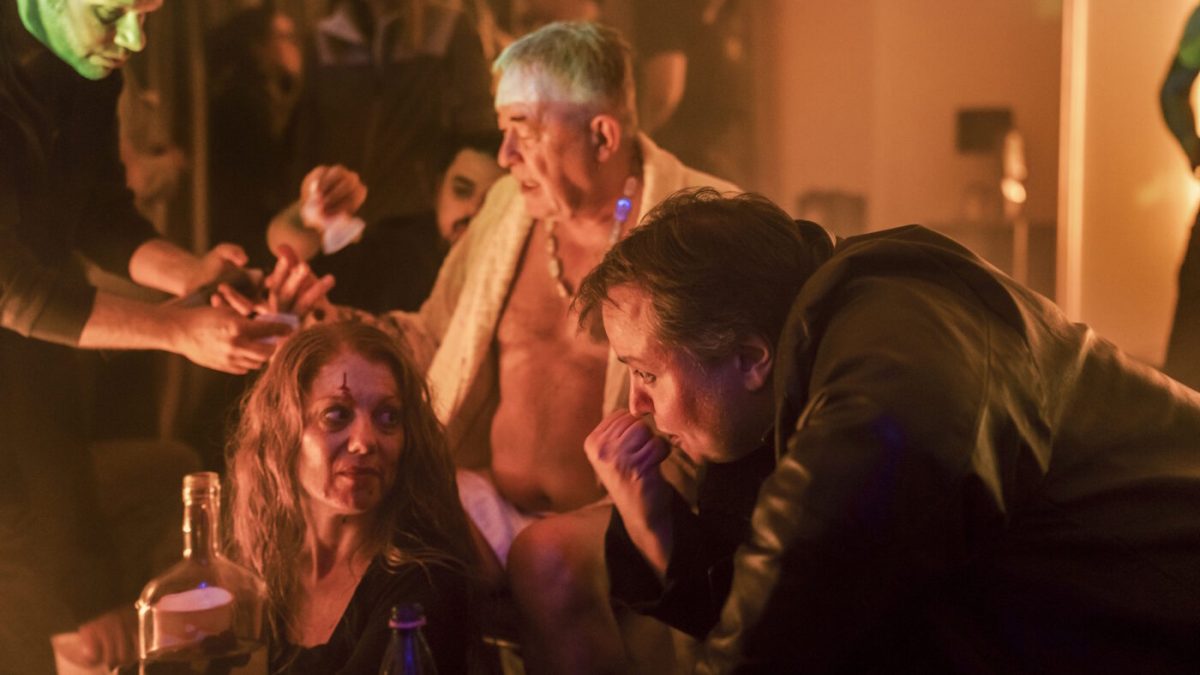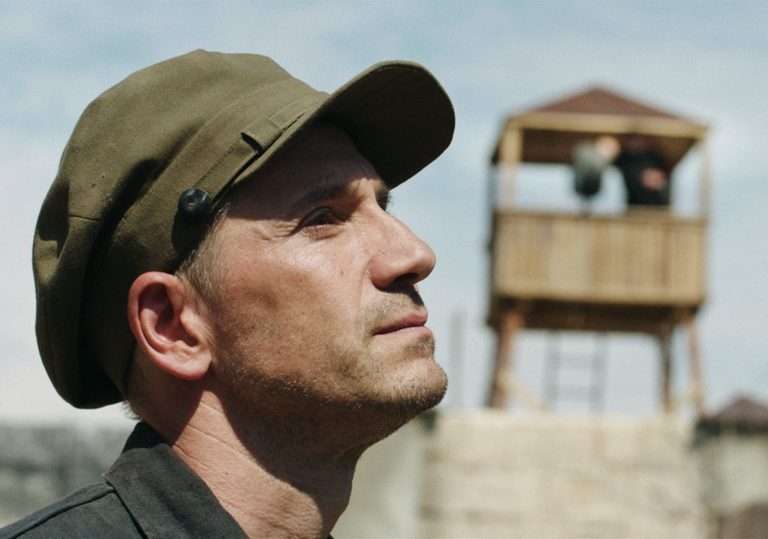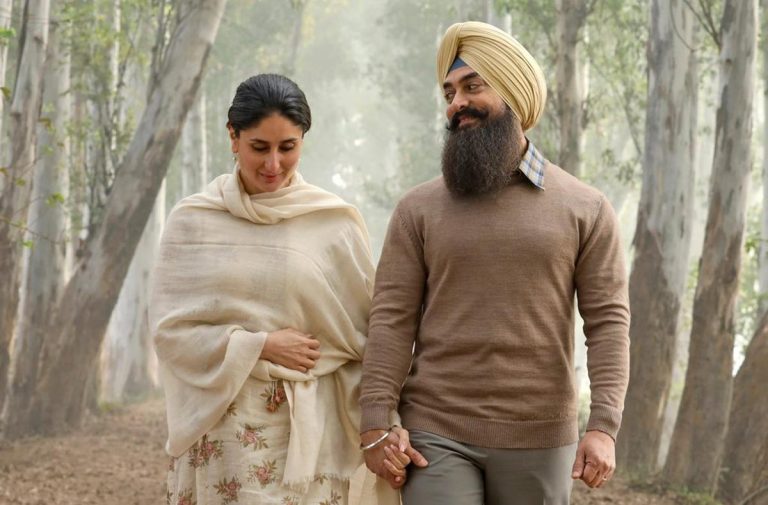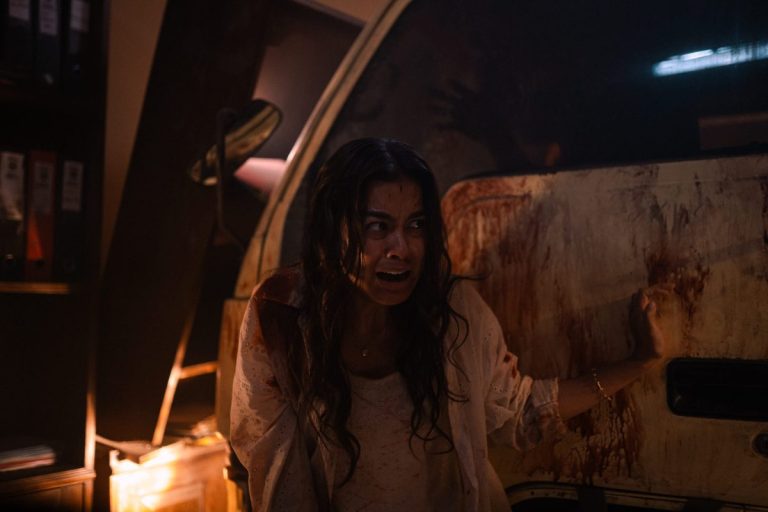The last time Aleksandar Radivojević put pen to paper for the silver screens, the end result caused a tectonic shock like no other in recent memory. Since the premiere of Srđan Spasojević’s “A Serbian Film” — a grindhouse nightmare about a retired pornstar lured into a one last job descending into necrofilia and incest (to leave it at that) — the film became the subject of much notoriety both internationally and, perhaps even more so, domestically, simply for the mere ideation of events portrayed in the film, regardless of its visual depictions that weren’t lacking either.
Now, 15 years later, Radivojević returns with his directorial debut that may not be as hair-bristling with its taboos, but make no mistake, “Karmadonna” is a shock to the system that takes no prisoners.
“Karmadonna,” a directorial debut of Aleksandar Radivojević, recently premiered at TIFF’s Midnight Madness programme. The film opens on a long take of two kids fighting over a smartphone that’s playing an unskippable anti-smoking ad. Around them, all kinds of juvenilia unfold under a sunny sky.
All of this commotion doesn’t seem to bother Jelena (Jelena Đokić) — a beautiful woman well past her youth and deep into middle age — who is enchanted by her miraculous, and quite unexpected, pregnancy; seemingly achieved through in vitro fertilization. Everything shifts once she receives a call from an unknown deity, the self-proclaimed “Content Creator” (Sergej Trifunović).
The voice accurately predicts the horrors that are about to unfold near Jelena, as a demonstration of his power before the ultimate gambit. He wants her to “kill some people”. At first, she is hesitant, but when she realizes that the voice is no prankster, but God himself, with actual powers to harm her unborn child, she succumbs. Jelena becomes a woman on a mission to punish those who are “untouchable” — even for God.
From the opening long takes, through dolly zooms and a camera in constant motion, to oniric set pieces and choreographed oners, it has been a long time — if ever — since we’ve seen a Serbian film with such visceral, kinetic energy. “Karmadonna” is an assault on the senses, with Aleksandar Jakonić’s camera serving as a relentless instrument, its ceaseless movement and shifting angles emphasizing every tonal and emotional shift — desires, doubts, and anxieties that could have come straight out of a De Palma movie.

More Horror Movies: 10 Great Foreign Horror Movies You Can Watch Right Now
One sequence in particular is almost a direct homage to the “Twisted Nerve sequence” from “Kill Bill” (2004), itself a De Palma-esque homage in part. In a way, “Karmadonna” is an update of “Kill Bill.” While Tarantino’s two-part, multi-genre epic is a revenge tale about a mother seeking to punish those who killed her husband and unborn daughter (or so the Bride believed at the beginning of the first film), Jelena, in contrast, is not driven by vengeance.
Jelena’s prerogative, led over the phone by God himself, is driven by her wish to purge the evils around her in the hope of delivering her child into a better world. Although it follows a similar, killing-up-the-chain-of-command structure, unlike “Kill Bill” — which is an action coat rack for many genres — “Karmadonna” is a grindhouse horror that, for a good chunk of its running time, plays like a comedy.
One description that’s going to come up is that the film is like “The Omen” (1976) meets “John Wick,” and while there’s some truth to that, the film plays like a joke on these setups, rather than playing them straight up. The names of Sam Raimi and, perhaps, De Palma come to mind when describing the film’s dark sense of humor, but the comparison isn’t doing its grotesque humor justice. Raimi’s influence extends aesthetically as well, with several oniric tracking shots gliding just above the ground, approaching its subjects like an invisible force — a kind of shot most associated with Raimi’s early work.
In Lars Von Trier’s “Antichrist” (2009), nature is proclaimed to be Satan’s church. Although Radivojević’s vision of the world seems to be in a similar key, in a lot of ways, it is even more perverse. For the world to be Satan’s church, it still has to be a creation in celebration of life and certain values, even if they are evil values. The world of “Karmadonna” has no morals.
It’s God is a mishmash of the Old Testament God, with heavy Buddhist influences, but after passing through Radivojevič’s filter, this creator of all life is not a moral deity. This God does not stand for restraint and control of all urges and impulses, like in Christianity or Buddhism, but rather the opposite. In the film, all of life is made out of boredom; life is the celebration of impulse, and all known religious morals are simply human-made mechanisms of control.
God, or Bhagavad Gita (thus, “Karma” in the title of the film), isn’t concerned with punishing the overtly evil people, but the ones who disturb this principle. At one point, Jelena even confronts the voice: why target a nepo-baby influencer and an author of a self-help bestseller with a history of abuse (played by Petar Strugar), when countless criminals are out there causing much more harm and should be on top of the list? To this, God responds that such thinking is banal and that, in actuality, the worst offenders are people like the influencer in question.

Must Check Out: Top 10 Horror Movies to Watch on Halloween
To many critics of the film, this seemed like a shallow attack on influencer culture, but what they seem to be missing is that many of these “not-so-bad” figures are not just malign, but they also present a veneer of morality by purging themselves of hedonistic vices. In a way, these people act as managers of the libidinal economy, presenting themselves as virtuous for quitting smoking, while leading the public into a deeper moral decay, one in which urges and vices are micromanaged, yet new forms of decadent enjoyment are quietly permitted.
By far, this is most evident in the reality-show subplot of the film that helps people quit substance abuse, while facilitating other types of sodomy behind closed doors. When contrasting this sentiment with the themes of the two films Radivojević wrote before, an overarching theme becomes apparent.
In “Tears for Sale” (2009), we encounter women who make their living through performative sorrow, that is, by crying at funerals for money. Subsequently, in “A Serbian Film” (2010), the main protagonist is pulled into an “art-porn” production that depicts sexual acts in scenarios that highlight Serbia’s decay after the years of civil war and institutional corruption — parodying and mimicking how the actual Serbian cinema often “sells tears” to gain moral and commercial traction on the international market.
In such an environment, genre filmmaking is typically dismissed as lesser art, while the exploitation of misery is upheld as morally virtuous, limiting the space for “cinema as enjoyment”. Where these early critiques of Serbian culture stop, “Karmadonna” follows through. “Karmadonna” explicitly deals with this sentiment of “limiting enjoyment” in its plot, but then stops at that; its cinematic form becomes a manifestation of rebellion against these limitations. In a way, the cinematic form itself provides the answer.
While Serbian culture was the main target, in the years since “A Serbian Film” premiered, the rest of the world has caught up with Serbia in the exploitation of misery, so, like the director himself said after the premiere, now, the entire world is like Serbia, perhaps making it an even bigger stage for the arrival of “Karmadonna.”




![Love in the Villa [2022] Netflix Review: A Generic & Forgettable Rom-com That Romances a Heap of Cliches](https://79468c92.delivery.rocketcdn.me/wp-content/uploads/2022/09/Love-in-the-Villa-2022-Netflix-768x512.jpg)

![A Certain Kind of Silence [2019]: ‘KVIFF’ Review – Zero love in 12 Tribes Cult](https://79468c92.delivery.rocketcdn.me/wp-content/uploads/2019/07/A-Certain-Kind-Of-Silence1-highonfilms-768x415.jpg)
